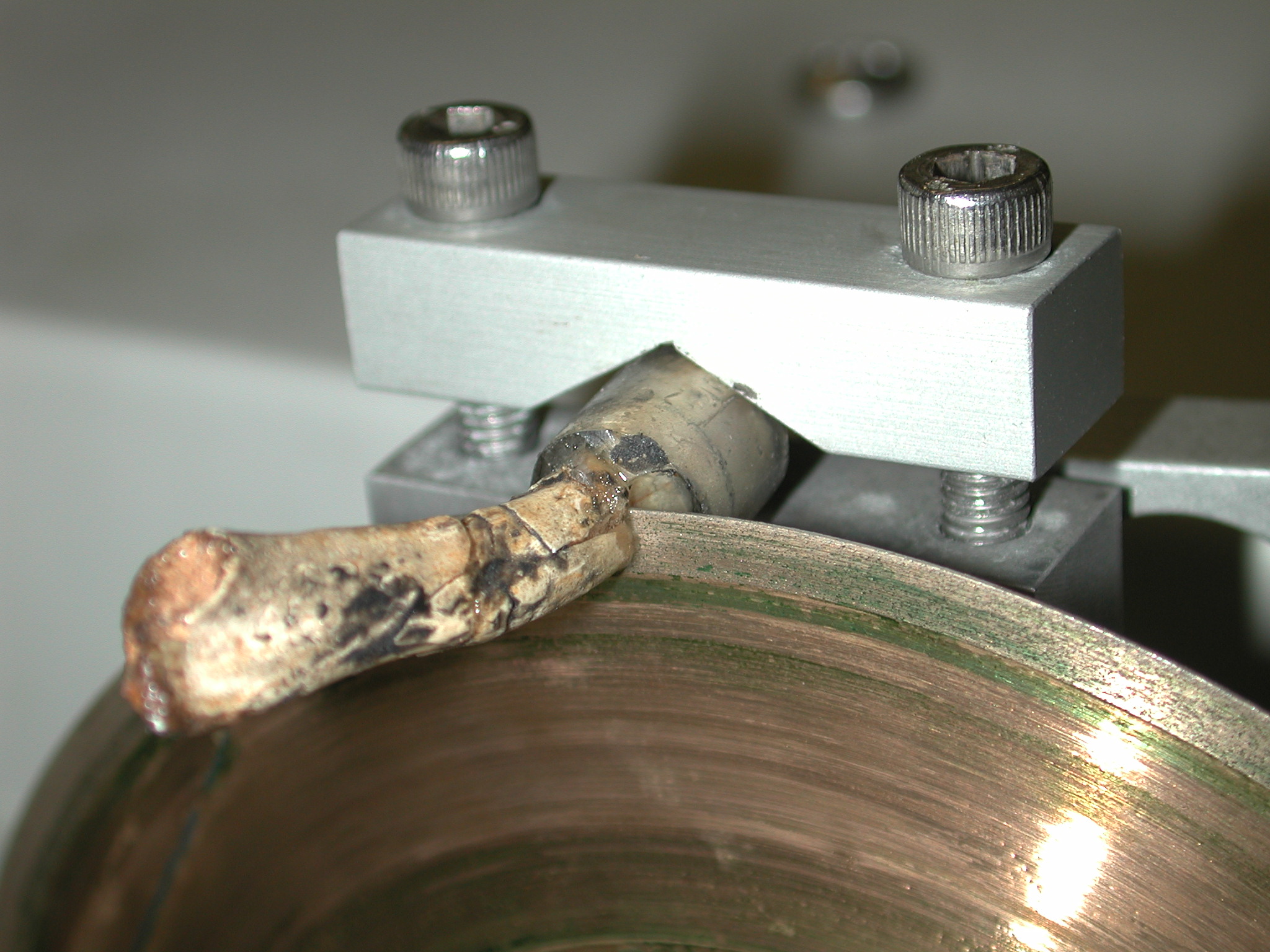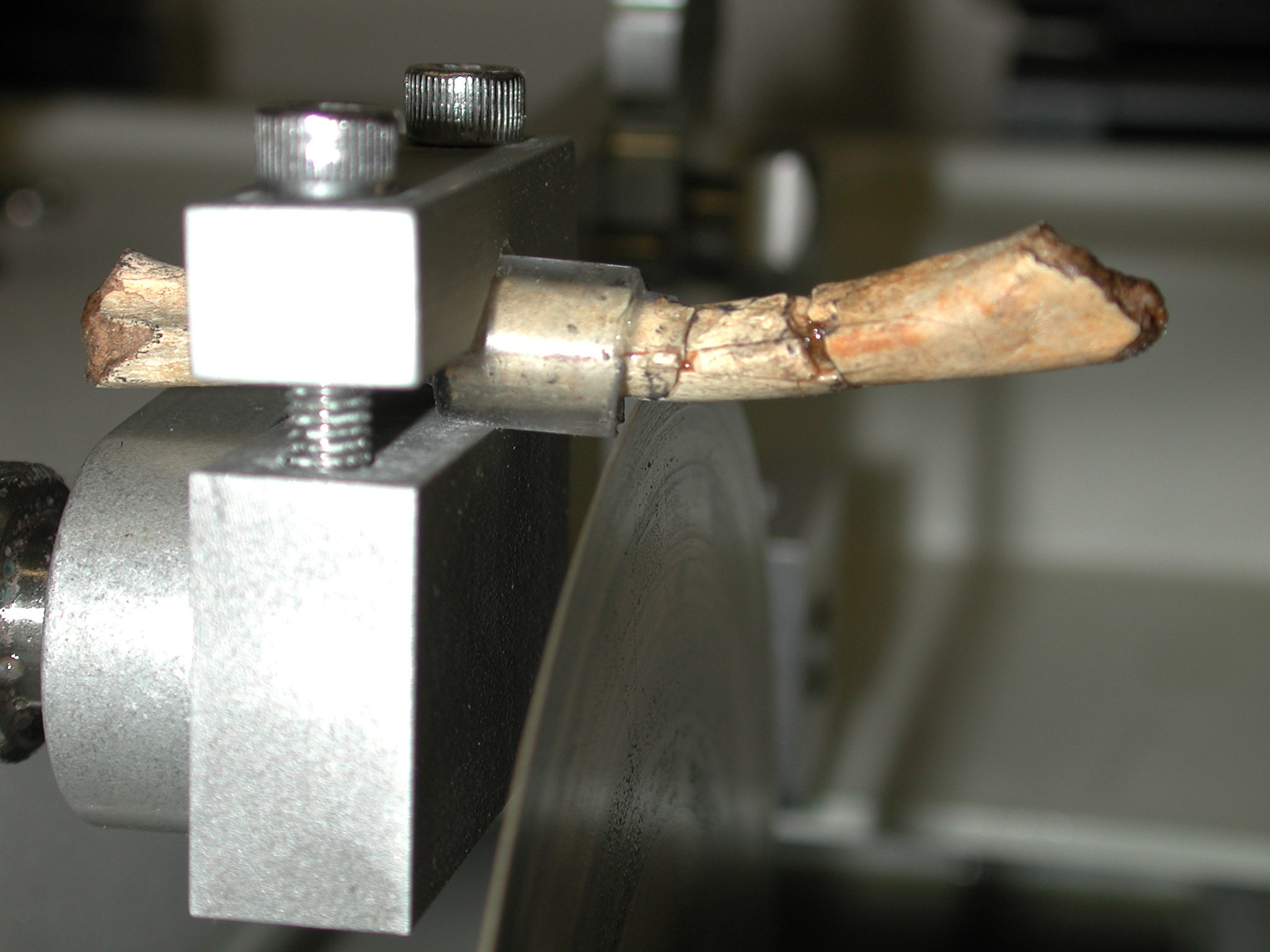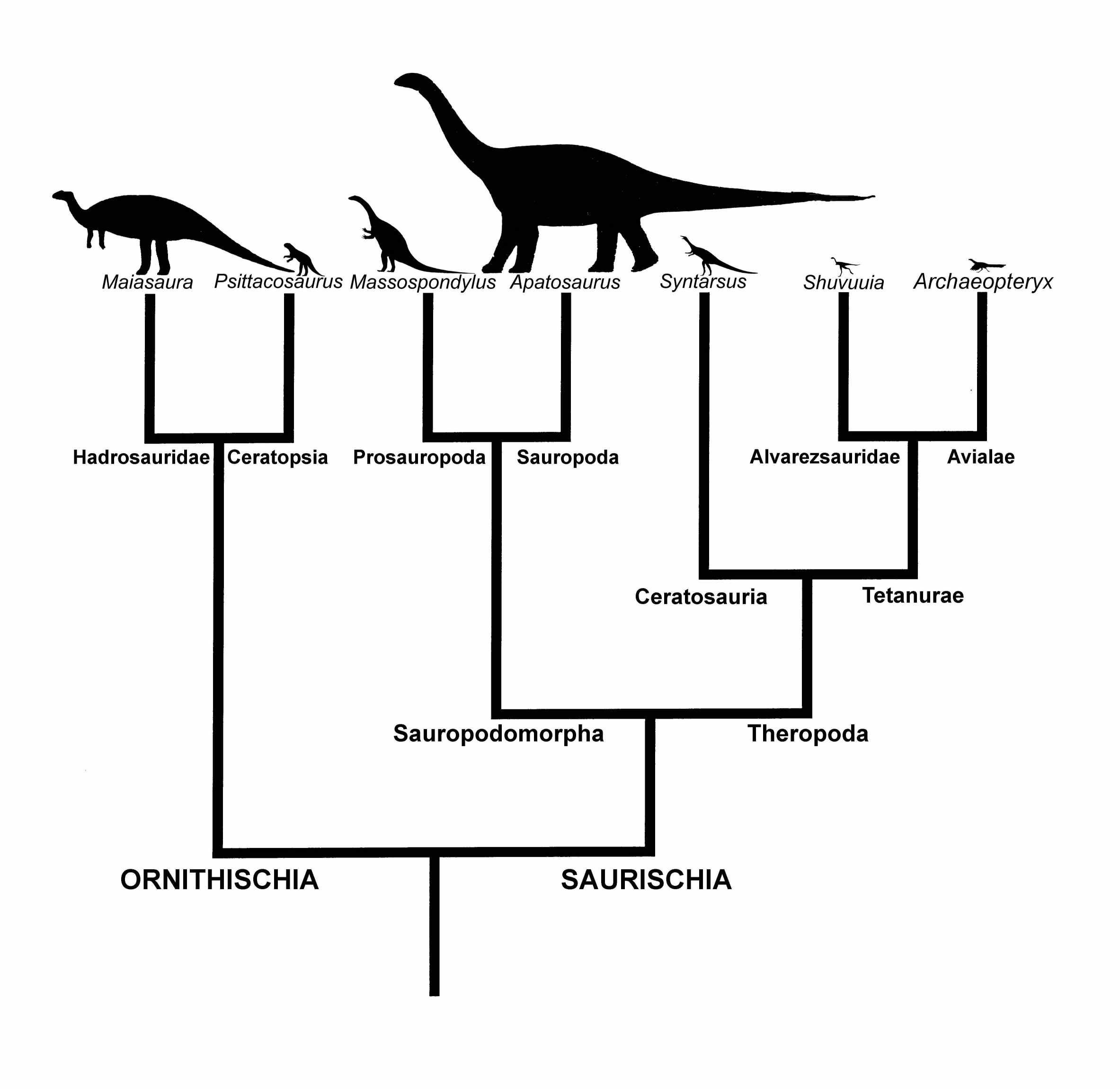|
|
 Dr. Kristina Curry-Rogers
|
|
| "This research settles several major debates that have transcended across several scientific disciplines" "including Paleontology, Physiology, Evolutionary biology, Herpetology, and Ornithology." | ||
| Definitions: marsupial
mammals are moderately rapidly growing mammals, precocial birds are well
developed at birth and leave the nest right after birth and grow rapidly
–the primitive condition for birds,
eutherian mammals are rapidly growing mammals such as ourselves,
altricial birds are born underdeveloped and are reared by the adultsand
grow extremely rapidly in the nest prior to leaving nest –the advanced
condition for birds.
|
 |
|
| Picture showing the Growth Line. Click on picture to see a larger image (photo: courtesy Erickson/Reprinted by permission from Nature (Erickson et al, 2001. Dinosaurian Growth Patterns & Rapid Avian Growth Rates. Nature 412:429-433) copyright (2001) Macmillan Magazines Ltd.) |
||
 |
"In the 1960s and
70s this paradigm came under scrutiny and many researchers came to
believe dinosaurs were biologically more like living birds"
"Small chicken-sized dinosaurs grew like marsupial mammals, horse-sized dinosaurs like precocial birds, elephant-sized dinosaurs like eutherian mammals, and gigantic sauropod (long-necked dinosaurs) like whales" |
|
| Click on picture to see a larger image (photo courtesy Erickson) |
||
| "Recently it has been contended that the presence of growth lines in dinosaur bones (a typically reptilian attribute marking cessations in growth during development) coupled with a highly vascularized matrix like birds and mammals indicated rates intermediate between reptiles and birds/mammals." |  |
|
| Click on picture to see a larger image (photo courtesy Erickson) |
||
 |
"Prior to the 1960’s
it was generally believed that dinosaurs were simply scaled up versions
of living reptiles—growing at very slow rates relative to living
mammals and birds."
"No dinosaurs achieved growth rates like those of living altricial birds (e.g. passerines --perching birds)scaled to similar size" |
|
| Click on picture to see a larger image (photo: courtesy Erickson/Reprinted by permission from Nature (Erickson et al, 2001. Dinosaurian Growth Patterns & Rapid Avian Growth Rates. Nature 412:429-433) copyright (2001) Macmillan Magazines Ltd.) |
||
| "Nevertheless their rates as a whole were not akin to those
of living marsupial mammals precocial birds, eutherian mammals, or
altricial birds"
"It appears the birds attained their rapid growth rates after birds diverged from non-avian dinosaurs" "Birds evolved from theropod dinosaurs [meat eating dinosaurs] that were close relatives to the velociraptors seen in Jurassic park" |
 |
|
| Click on picture to see a larger image (photo: courtesy Erickson/Reprinted by permission from Nature (Erickson et al, 2001. Dinosaurian Growth Patterns & Rapid Avian Growth Rates. Nature 412:429-433) copyright (2001) Macmillan Magazines Ltd.)) |
||

|
"Surprisingly, the
results of our study show that none of these theories explains to the
growth of dinosaurs as a whole"
"We’re a long way from Jurassic Park". "Nevertheless, recent efforts by young researchers employing new integrative cross-disciplinary techniques places paleontology on the brink of numerous major breakthroughs. Findings from such investigators will open the door to understanding what lives of dinosaurs were really like." "The blue whale is still the all-time growth champion owing to its shear size being twice that of the largest dinosaurs." "Just the same, the largest dinosaurs could put on the pounds " "They wouldn’t have made very good spokespersons for Subway " "Our results serve as a foundation upon which we can understand the lives of dinosaurs" (e.g. how long it took to attain adulthood, age at maturity, likely physiological rates, modeling of how they utilized resources, population dynamics, etc." "The evolution of avian growth rates appears to have been a stepwise process punctuated by the following events: an increase in rates beyond the primitive reptilian condition that occurred with the evolution of the dinosaurs, a further increase to rapid precocial levels after birds diverged from the dinosaurs, and finally, extremely rapid rates were achieved in some birds with the evolution of altriciality "This is the most exciting time in the history of dinosaur paleontology. The bones are coming to life" |
|
| Click on picture to see a larger image (photo: courtesy Erickson/Reprinted by permission from Nature (Erickson et al, 2001. Dinosaurian Growth Patterns & Rapid Avian Growth Rates. Nature 412:429-433) copyright (2001) Macmillan Magazines Ltd.) |
||
"All dinosaurs (primitive and advanced, large or small) grew at rates accelerated beyond those typical of reptiles today" "It is amazing how rapid the giant sauropod dinosaurs were growing. Clearly these were the fastest growing terrestrial animals ever." "Growth lines are found in the bones of most extinct animal lineages, our methods could be applied to any of these groups"
|
||
